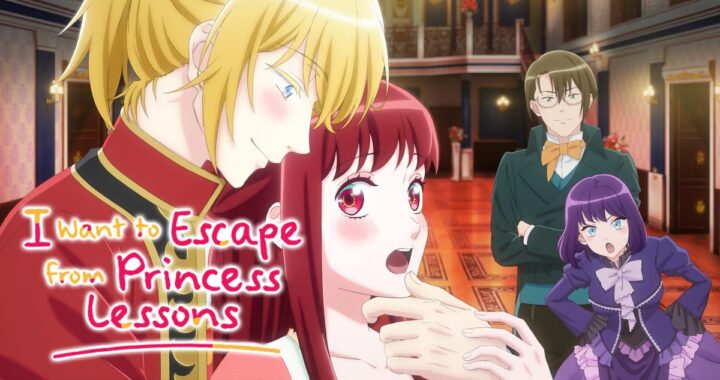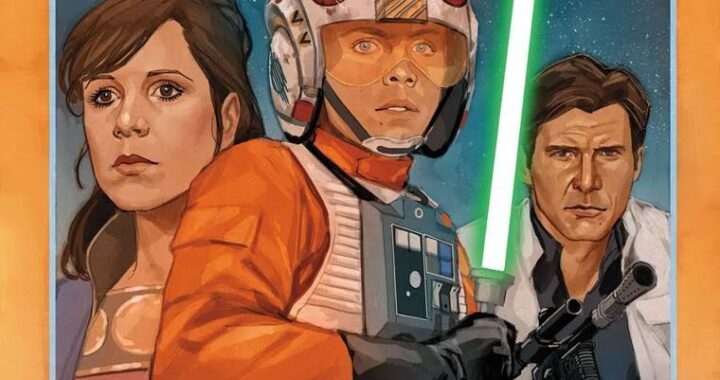Hey everyone. Welcome to our little corner of anime discussion. Or if you’re returning, welcome back. At around this time, Studio Trigger is doing a dual release of their revamped Gurren Lagann compilation movies Childhood’s End and The Lights In The Skies Are Stars. Also a fun new mecha anime entitled Brave Bang Bravern has started on Crunchyroll. So we decided to take a look back at the super robot shows we enjoyed the most.
I grew up during the 70s and 80s, so I got to see cartoons in the ‘enjoy your 6 channels via tinfoil and wire hanging antennas with possibly hard to reach UHF syndication stations’ era. I’d no knowledge of anime at that time naturally. Shows like Speed Racer and Battle of the Planets were part of the usual fare. To me they were just weird looking cartoons, like Super Friends but different. In that vein, there were also Jim Terry Force Five shows and Shogun Warrior toys consisting of some of the super robots we’ll be looking at below, along with my fellow mecha aficionado Dave Merrill, creator and lead writer of the website Let’s Anime. We’re of the same generation so it was a no-brainer that we should tag-team on a piece about super robots.
The world of super heroic robots has been a staple of Japanese animation for over 50 years now, since studios began actively producing the medium for television. Though there have been less of these shows in the last decade or two, the genre of the heroic robot battling against incredible odds in the name of justice has remained entertaining over the years. It started in the 60s and flourished until about the mid-90s and tapered off. It was about as prevalent a genre as Isekai and reincarnation titles are now. We’re going to be reminiscing about a bunch or our favorites which will be separate from the war mecha / real robot genre, where the main character takes a machine out to the battlefield alongside friends who may not survive the episode. So anyone looking for Gundam, Evangelion, Macross, Code Geass or such, you won’t find them among these titles.
*****
ARMORED FLEET DAIRUGGER XV / VEHICLE TEAM VOLTRON
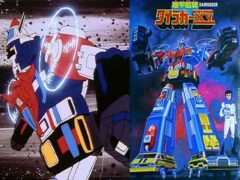
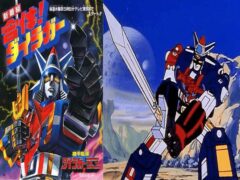
1. In the fall of 1984, Voltron was released across the country. In my city of St. Louis, where the production company World Events Productions is based, it was quite an experience to have their local channel partner KPLR-11 throw out a full media blitz at me. Initially, I liked running home to see the mechanical lions and defend planet Arus fight the robeast of the week while dealing with whatever team member had an issue. The footage adapted from the anime Beast King Golion was cool to look at. But then a strange thing happened. I started watching this other Voltron show at 1am Staurday nights with 15 vehicles combining into a big bot and came to like it better. The footage of this show was adapted from Armored Fleet Dairugger XV, telling of a crew of space explorers trying to find a new planet to colonize as Earth’s resources have dwindled. Opposing them are the Drule Empire (Japanese name: The Galveston Empire) who don’t like seeing this new race come into their area. The compelling aspects come from seeing different new worlds, really good fights, and the fact the Galveston’s own planet is in danger but their leaders only want to conquer instead of exploring to save their race Only one of them, Hazar (Teles) wants to try. Often I’m the minority opinion that of the three Volton series from the 80s, this was the best one. (Yes, there was a Voltron II known as Albegas which is finally coming to Blu-ray, thanks to Discotek.) I know the lions dominated many folks tastes then and now (as many people don’t even remember the vehicle version of Voltron anymore), but Dairugger had a solid story of exploration, self examination and desperation. Media Blasters released very good box sets of these, both the American and original Japanese versions. More on Dairugger XV here. – Darius
*****
BRAVE RAIDEEN
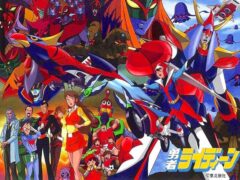
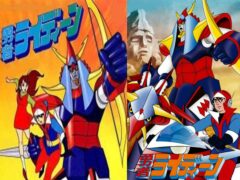
2. Few cartoons embody the outlandish, colorful zeitgeist of mid-1970s Japanese pop culture like Brave Reideen, the story of a confused motorcycle-riding high school soccer star named Akira Hibiki who finds out he’s the last descendant of the lost Mu Empire. In practice, this means he controls the gigantic transforming battle robot Raideen, just in time to defeat the monsters of Prince Sharkin, leader of the Demon Empire, an underground race of monsters who worship the actual Satan. Brave Reideen was created specifically as TV anime for Tohokushinsha by the dream team of Yoshiyuki “Gundam” Tomino and Tadao “Voltes V” Nagahama with character designs by Yoshikazu Yasuhiko, who as “Yas” would define Gundam, Dirty Pair, Crusher Joe, Venus Wars, and prehistoric juvenile delinquent Kum-Kum. All bright primary colors, bell-bottom jeans, fringe jackets, and spiky, insectoid mechanical creatures, Raideen is pure 1970s pop culture television. Meanwhile, Raideen’s God-Bird mode was the first time we’d see a giant robot transform, and Raideen’s broadcast on American UHF television in 1976 would be the first time a super robot cartoon aired in the United States. Apart from the UHF broadcasts, two English-language children’s books, and some Shogun Warriors toys, Brave Raideen remains unlicensed in North America. – Dave
*****
COMBATTLER V
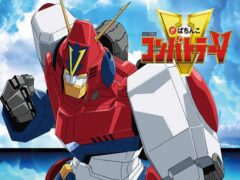
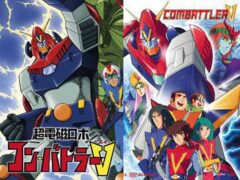
3. Fresh from directing the back half of Brave Raideen, animation veteran Tadao Nagahama jumped right into his next project, Super Electromagnetic Robo Combattler V. Animated by Nippon Sunrise and produced by Toei, Combattler V introduced us to the 5-combination super robot concept, enabling dramatic character interaction and complex mechanical action that could be translated faithfully into the medium of diecast and plastic toys. Using their Super Electromagnetic Robo, its Super Electromagnetic Yo-Yo and its Super Electromagnetic Whirlwind, Hyoma and his four fellow Combattlers Juzo (the mean guy), Daisaku (the big guy), Kosuke (the kid) and Chizuru (the girl) combine to battle the forces of Great General Garuda and his attack of bio-mechanical beasts from the whimsically named Planet Campbell. Combattler V was the first in Nagahama’s “Robot Romance” trilogy, continuing in Voltes V and culminating in Fighting General Daimos, all of which would involve super robots, tragic melodrama, and heart-rending science-fictional romances. Nagahama’s sudden passing at age 43 robbed the anime world of one of its most promising talents, and we’re all the poorer for it. Combattler V would have a manga adaptation with art by Akira (YAMATO III) Hio and an English dub for the late 1970s Filipino market, but a genuine American release wouldn’t happen until Discotek’s 2020 SD BD release. – Dave
*****
DANGAIO: HYPER COMBAT UNIT
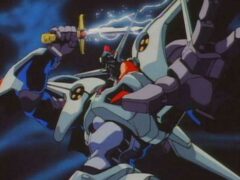
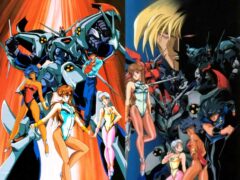
4. During the height of the 80s OAV (Original Animation Video) boom, director Toshihiro Hirano fresh from his contributions to other mech works like Megazone 23 and Fight! Iczer-One, decided to do his own super-robot show about 4 ESPers who are kidnapped from their worlds and brainwashed to pilot planes which combine into the powerful robot Dangaio. Since this all-too-brief series was done as OAVs, the artwork and animation were better than most TV series at the time. There were also kick-ass mech designs and additional animation from Masami Obari (Detonator Orgun, Brave Bang Bravern) and pretty good fight sequences. However, the budget ran out and Dangaio ended at 3 volumes with a messed up conclusion. Many years later there was a sequel show called Great Dangaio but it wasn’t nearly as good. The original OAVs are a fun watch if you can get the VHS releases which were some of the earliest uncut anime released in America by U.S. Renditions. There was also a DVD by Manga Entertainment but it had terrible graphics, horrible video quality and omitted the first episode entirely. Hopefully, another company will import the beautiful Japanese Blu-rays and give it a better presentation someday. – Darius
https://www.youtube.com/watch?v=MmuKbM_oMIU
*****
DINO MECH GAIKING
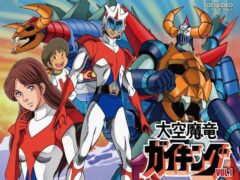
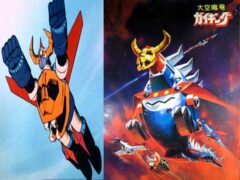
5. One of the influential super robot shows of old, Gaiking had interesting mecha designs based on aquatic, amphibian and animal life. Our story starts on the planet Zelas which is about to be swallowed by a black hole. The Emperor Darius (Hey I get to be an anime villain! Cool!) and his four generals decide to move his population to Earth and wipe out the natives, by forcibly brainwashing his people (now stuck living underground) into the Dark Horror Army and unleashing mechanical Dark Horror Monsters. He also begins assassinating humans with psychic super abilities, such as our main character Shanshiro, a rising baseball pitcher. NASA has been watching these events and recruits several people to fly the Daiku Maryu, a new dinosaur-shaped battleship with a superalloy. It’s headpiece links with two other ships to form the super robot Gaiking, which Shanshiro the baseball psychic pilots. It’s an interesting design in it’s own right with the drill bits and the unusual assembly. The 44-episode series caused a serious dispute between Toei Animation and it’s creator Go Nagai which led to the two not working together for ten years. Gaiking got released in the U.S. under Jim Terry’s Force Five collection and in South America as part of the Festival de Los Robotos series. The toys were brought over as part of the Shogun Warriors line. There was a nicely-animated revamped version in the early 2000s called Gaiking: Legend of the Daiku Maryu. This one has not been imported but hopefully, that’ll change someday. I’m fairly certain aspects of this show were used in others like Dangaio and Gurren Lagann but only those creators can say. – Darius
*****
GETTER ROBO
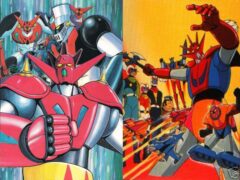
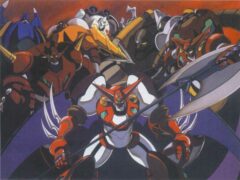
6. Not content to merely invent the super robot genre, manga legend Go Nagai and his equally inventive partner Ken Ishikawa followed Mazinger Z with 1974’s Getter Robo, the first combination super robot. When the evil Megasaur Empire of prehistoric monster dinosaurs erupts from the center of the Earth bent on world domination, there’s only one defense. Ryo, Hayato, and Musashi must climb into Dr. Saotome’s high-tech fighter planes, which, when combined with each other, become one of three specialist super robots powered by mysterious space-borne “Getter Rays.” This enables humanity to survive, and for various toy companies to sell three times the toys. Getter Robo, in manga and an 85-episode Toei Animation series, would defeat subterranean dinosaurs, Hitler devils, wild 70s super robot team-up short films, and lackluster late 80s sequels, returning in the 90s for a series of well-regarded OVAs with a bewildering variety of titles. The American market would get Getter in bits and pieces. The second half of the 1975 TV series was localized as “Starvengers” for Jim Terry’s “Force Five” syndicated television package, and a confusing array of direct-to-video Getter Robo releases from Discotek include New Getter Robo, Getter Robo Armageddon, and Shin Getter Robo Vs. Neo Getter Robo. – Dave
*****
GIANT GORG
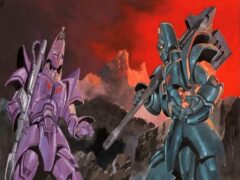
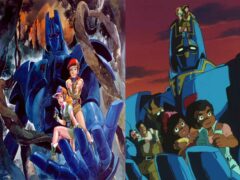
7. Yu Tagami just wants to find out if his late father was right about the mystery of Austral Island. This simple question starts Yu down a path that leads him to New York City and Dr. Wave, Wave’s daughter Doris, the gruff, enigmatic Sencho, a murderous freelance spy network led by the sexy Lady Lynx, the multinational corporation GAIL, the rebellious Austral locals, the governments of most of the Northern Hemisphere, and the mysterious giant mechanical entity known only as Gorg, worshiped as a god by islanders and somehow connected directly to Yu. In some ways an updated version of Brave Raideen, Giant Gorg might be the most solid 26 episodes of Japanese animation ever made, a masterpiece of young-adult science fiction written and directed by Yoshikazu “Yas” Yasuhiko and smoothly animated by Nippon Sunrise with lush backgrounds, minute attention to detail, complex world-building, and theater-quality character animation rarely seen in TV productions. This 1984 series avoids filler and cliches, refusing to sit neatly into the artificial categories fans try to shove all Japanese animation into. Giant Gorg is its own thing and might very well be the high watermark for Japanese animation as a whole. Gorg has been released on DVD by Discotek in North America and is also available to watch on streaming platforms, and I highly recommend it to everyone, everywhere. You can read more about Giant Gorg here. – Dave
*****
GIANT ROBO
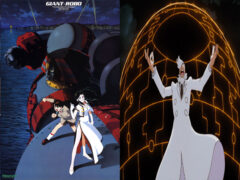
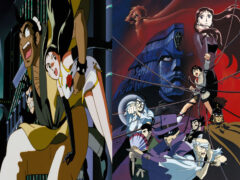
8. In the 90s, director Yasuhiro Imagawa (Mobile Fighter G Gundam, Mazinger Edition Z) unleashed the best OAV series I’ve ever watched, slightly beating Gunbuster and Macross Plus. It had an epic story, very good key animation, a thunderous soundtrack and a unique mix of retro-style character designs meant to emulate the works of Mitseru Yokoyama. Outside of him having created Tetsujin No. 28 (AKA Gigantor), I had no real idea who Yokoyama was going into the show. So it was fun to be educated on by friends at the anime club (thanks, Dave M. ^_^ ) about his other works such as Suikoden, Mars, Masked Ninja Akakage, Babel II, and the original live-action Giant Robo (brought to the U.S. as Johnny Sokko and his Giant Robot.) These characters were repurposed as other villains and heroes to tell the story of young Daisaku, a young boy recruited by a group of super-powered agents called The Experts of Justice to help stop the villainous world conquerors The Magnificent Ten, led by the mysterious Lord Big Fire. Daisuke has at his side Giant Robo, the loyal super robot ready to protect him at all cost. A lot of drama surrounding the characters has taken place before the series and seemingly a lot after as well, but these OAVs tell a compelling complete story that leaves quite an impression when everything is over. The series was released in the U.S. by Mange Entertainment and Media Blasters on DVD and VHS. Later, the license passed the Discotek Media who put out a “kitchen sink” Blu-ray set complete with a ton of extras, reviewed here – Darius
*****
GOD MARS
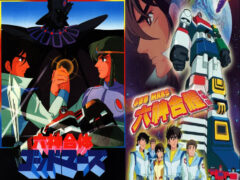
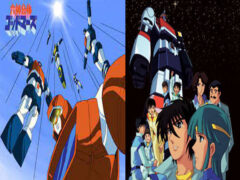
9. From far off in outer space the evil Zule of the Gishin cosmic empire sends his legions to attack the Earth. Unbeknownst to the members of Earth’s crack defense team the Crasher Squad, their top pilot Takeru Myojin is actually a Gishin ESPer named Mars, sent as a sleeper agent to destroy the Earth from within! However, Takeru/Mars rebels against Zule and with his six-god combination robot God Mars, helps to defend our planet. Based on the “Mars” manga by Mitsuteru Yokoyama, 1982’s God Mars serves as an unofficial sequel to TMS’s 1980 Tetsujin-28 series, right down to Crasher Squad commander Ohtsuka, continuing his role from Tetsujin-28. Fans of brightly colored super robot action will thrill to seeing the six God Mars robots Gaia, Sphinx, Uranus, Titan, Shin, and Ra erupt from their secret vaults and combine into God Mars at Takeru’s shouted command of “Rokushin gattai!” And the show depends on that thrill because you’re going to be seeing it for most of the series’ 64 episodes. More interesting to 1982’s viewers was the tortured relationship between Mars and his Gishin-bound twin brother Marg, both connected through ESP but tragically separated by the evil machinations of Emperor Zule.
The Mars/Marg team led to a cottage industry of yaoi fan doujinshi, the incestuous homoeroticism of which was only partially derailed by the late-season addition of the mysterious Rose, sent to destroy Mars yet also inexplicably attracted to him. God Mars would defeat Zule, move into interstellar space for a second-season story arc involving space pirates, Space Popes and refugee royalty, and wrap up with a third chapter devoted to the return of Zule and the end of a series that everyone agreed had run out of steam somewhere around the 45th or 50th time we see Takeru holler “Rokushin Gattai.” God Mars is worth checking out, if only for the series’ beautiful blue skies, the gleaming colors of the Mars robots, and the sparkling TMS animation filled with shiny highlights, top notch mechanical design, and a killer theme song. For years unavailable in North America, the series is currently streaming on Amazon and available on blu ray by Discotek Media. More details on Takeru, Marg, Zule, and God Mars is at Let’s Anime here. – Dave
*****
GOSHOGUN
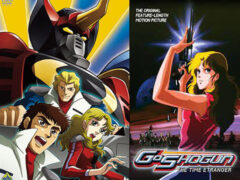
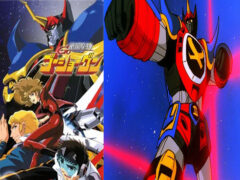
10. This 1981 show entitled Warring States Destroyer GoShogun is an interesting sci-fi story as well as a mecha show. In a time when Earth has been conquered secretly by a set of people and increasingly sentient robots called The Docooga, led by Emperor Neoneros. One small group consisting of Shingo, Remy and Killy and Kenta along with three scientists steal a ship called the Good Thunder which houses the three fighter planes that connect with the pre-assembled super robot GoShogun. Kenta doesn’t pilot much in the wake of fis dad killing himself to keep his research out of the wrong hands. However, he becomes increasingly important as the show goes on using the ship’s computer Father to figure out there might be more to this takeover than anyone realized related to an energy force called Bremler that powers Good Thunder. Both were both written by Takeshi Shudo (Space Warrior Baldios, Pokemon) and directed by Kunihiko Yuyama (Windaria, Pokemon, Ushio & Tora). GoShogun has a bit of an odd import history as one U.S. company brought it over during the 80s era of hack-and-slash editing with bad English dubbing, and renamed the show Macron-1. (Yecch!) In 1985, the show’s sequel film GoShogun The Time Etranger (not to be confused with the 80s anime film Time Stranger. Totally different.) was released uncut by Central Park Media but without the original TV series, which was eventually released in the U.S. on DVD by Discotek Media. – Darius
*****
KING OF BRAVES GAOGAIGAR
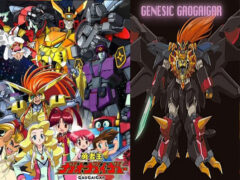
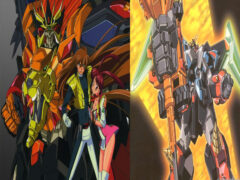
11. In 1990, after failed dealings involving the Transformers franchise, Sunrise and Takara teamed up to release the Brave initiative, a series of super robot anime which had heroic, sentient mecha combating evil in various forms alongside humans. Most shows such as Might Gaine, Ga-Darn, and J-Decker, are unrelated to each other but have unifying design aesthetics and storyline styles, similar to how the Gundam AU timelines are set. In 1997, King of Braves Gaogaigar hit Japanese airwaves and introduced viewers to baby Mamoru, an alien child who was brought to Earth by a robot lion and left with an ordinary couple. Several years later, astronaut Gai encounters that same lion in space and winds up becoming a cyborg, who is given a mysterious green jewel… Years later, a Zonder monster (a person merged with a mysterious alien metal) attacks to wreak havoc on the city. However, Gai reappears, now piloting Galeon, the lion that saved him. Working with the Earth Defense Brigade Gutsy Geoid Guard, Gai and Galeon merge with three other vehicles to become the super robot GaogaiGar. After defeating the monster, Mamoru appears and “purifies” the egg inside and reverts the human back to normal.
Directed by Yoshitomo Yonetani (Food Wars, The Laughing Salesman) and written by Yoshitake Suzuki (Xabungle Grafitti, Zambot 3) along with Sunrise’s Hajime Yatate writing group (Space Runaway Ideon, Aura Battler Dunbine, Vision of Escaflowne), Gaogaigar represents a serious love for mecha anime by everyone involved. The creators have Gaogaigar use tools besides the usual super robot weapons such as a super sword or a BFG gun. Instead he uses things like a flat-head Dividing Driver, the Broken Phantom and the Goldion Hammer (with a built in chisel). There are some colorful characters, human and robot alike, who are a lot of fun to learn about. (The aurally-powered Mic Sounders is a particular favorite.) The GGG group often has the same solution to various problems: when in doubt, build a new robot to solve it. Case in point, the first time Gaogaigar uses the hammer, it destroys half his own body. So they create Goldymarg, a strong robot who becomes a gauntlet to use the hammer. The story is a fun one but it never forgets the gravity of the evolving situation Earth faces. It strikes a good balance between the two. Also, one should watch the opening credits of every episode as little by little there are subtle changes. The show has a pretty good ending as the does its sequel Gaogaigar Final, the emotional OAV series where the team faces a new threat that concludes everything. This sequel was recut as a TV show called Gaogaigar Final: Grand Glorious Gathering. There is a spinoff series called Betterman that approaches the Zonder threat from a differ angle. This series was released in the U.S. on DVD by Bandai Entertainment and later acquired by Sentai Filmworks. Gaogargar itself was released initially in two box set by Media Blasters. Unfortunately due to low sales, only half of it was given an English dub. The license was later acquired by Discotek Media who released both Gaogaigar and Gaogaigar Final on blu ray with a ton of extras under their “kitchen sink” banner. The recut was not included. – Darius
*****
MAZINGER Z
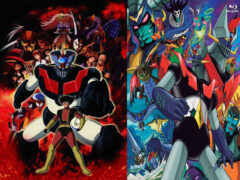
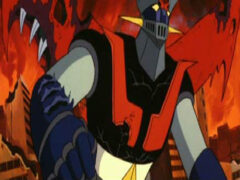
12. Mangaka Go Nagai was already famous for outraging PTAs across Japan with his riotous late 60s comedy Harenchi Gakuen, or ‘Shameless School.’ That was only a warmup for the shock when he delivered one of his greatest works, 1972’s MazingerZ. Drawing liberally from Japan’s “Majin” legend as well as contemporary Japanese SF manga like Yokoyama’s Tetsujin-28 and Izumi Yukio’s Dai Machine, with Mazinger Z Nagai created one of the most iconic, most toyetic pop culture images of the 1970s, the giant super robot. Piloted by teenager Koji Kabuto (the first main character to pilot a robot from inside instead of doing so via remote control) on a mission of revenge against the world-domination plans of the aptly named Doctor Hell, Mazinger Z would spawn an entire team of Go Nagai super robots and legions of imitators and homages, not to mention hundreds of various Toei TV anime episodes and millions of plastic and diecast robot toys. The 96 episode Mazinger Z Toei series would see an 80s American broadcast as “Tranzor Z” in syndication and a subtitled, uncut version of the series would eventually appear on DVD and BD from Discotek Media. – Dave
https://www.fandompost.com/2014/08/23/mazinger-z-tv-series-part-1-anime-dvd-review/
https://www.fandompost.com/2015/01/20/mazinger-z-tv-series-part-2-anime-dvd-review/
*****
MAZINKAISER
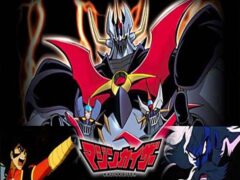
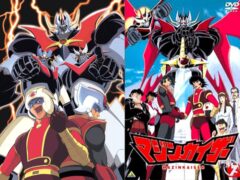
13. Mazinger Z had a few sequels and re-imaginings over the decades. Great Mazinger was the most direct sequel, followed in later years by Mazinger Edition Z: The Impact and Mazinger Z Infinity, as well as appearances in the Super Robot Wars games. In the 2000s, director Masahiko Murata (Naruto Shippuden, Lupin III: Dead or Alive) did the short OVA series Mazinkaiser, which rebooted premise of Mazinger Z / Great Mazinger in a new direction. We have Dr. Hell and Baron Ashura attacking the good guys and in the midst of things, the bad guy bots rip the pilder pod carrying pilot Koji Kabuto out of Mazinger Z and throw it into the night. Later Dr. Hell has the re-purposed Maz Z beat up the good guys when a new mech appears that looks similar to Mazinger but bigger with a gladiator-style frame like Grendizer. (see below) It thrashes Bad Maz Z and shows a semi-conscious Koji at the controls. Turns out Grandpa Kabuto left this last big machine Mazinkaiser for him in case he effs up with Mazinger Z. It’s a fun version of events that culminates with the singular OAV Mazinkaiser vs. Grand General of Darkness, who is the antagonist showcased in Great Mazinger. Although this title may sound similar to Mazinger Z vs Grand General of Darkness, the two stories are entirely different. In the Mazinkaiser video, the leader of the Mikene Empire sends his forces to kill Koji’s friends. Meanwhile, Koji himself is out searching for the Mazinkaiser which has disappeared. Like its predecessor, this vid has crazy action scenes, appearances by Koji’s great love Sayaka, the Boss Boroto team, Great Mazinger, and the one of the best mech fights I’ve ever seen. The first series was dubbed and released on DVD in the U.S. by ADV Films. Discotek Media recently announced it will be released on blu ray with the previous dub during 2024. The Grand General OVA was also licensed by Discotek Media in 2023 and has a new dub with entirely different actors produced by Kocha Sound and headlined by A.J Beckles, the first black man to portray Koji Kabuto in any English production. – Darius
*****
MIGHTY ORBOTS
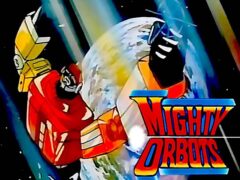
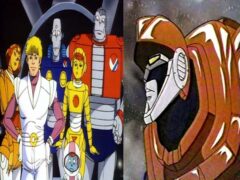
14. If you’ve read some of my previous articles, you may be aware my favorite anime director is Osamu Dezaki who led many prominent productions such as Aim For The Ace, The Professional: Golgo 13, Tomorrows Joe, Black Jack, Rose of Versailles and many others, usually teaming with his character designer Akio Sugino. As a 70s child, it hadn’t dawned on me the Dezaki directed or heavily contributed to some of my favorite U.S. kid toons like Frosty The Snowman, Visionaries, Bionic Six, Rainbow Brite and our subject here Mighty Orbots. This was an ABC Saturday Morning cartoon created by Barry Glaser and Fred Silverman in the mid-80s that took place in distant future when humans, robots and aliens all get along in a Star Wars-like environment. A planet-sized computer named Umbra seeks to destroy the Earth-based Galactic Patrol in every weekly episode but he has to deal with our heroes: six sentient robots with their own unique abilities led by their human creator Rob Simmons. When the emergencies arise, Rob changes into The Orbots Commander and has his team combine in a nicely animated (not to mention cost cutting) stack-and-attack sequence into Mighty Orbots, a gigantic gestalt ready to fight evil and save the day. The appeal of this show was the animation and artwork quality being so incredibly above anything else in this market. Multiple moving objects, color plates, and shadings were pervasive throughout with detailed painted backgrounds to boot. Dezaki’s work here was very similar to his style on Space Adventure Cobra: The Movie. (It was a major downer to go from such high quality work down to the bland Turbo Teen every week.) It also had a season ending episode (unusual for a Saturday morning cartoon at the time) which turned out to be a series finale as a complex series lawsuits involving Tonka toys and the Orbots design similarities to God Mars brought to show to an end. Mighty Orbots was released on DVD via the Warner Archive made-to-order program available on Amazon and even had a limited release in Japan. More details here. – Darius
*****
SUPER BEAST MACHINE GOD DANCOUGA
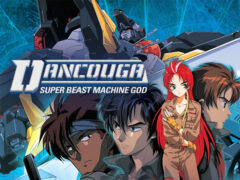
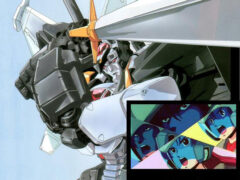
15. This 80s gem straddles the line between super robot and war mecha anime. Earth is being invaded by the Muge Zorbados Empire, and to make matters worse, the aliens are neing helped by former soldier Shapiro Keats, who is giving them a tactical advantage in every fight. Things are quite bad and humanity is losing. In these desperate times, leading Earth General Ross Igor (whose son Alan left to develop his own team) and Dr. Hazuki decide to recruit hothead pilot Shinobu Fujiwara to fly a new experimental fighter plane, which resembles an eagle, feeds off his anger and becomes nearly invulnerable to attack in the process. He’s soon joined by Sara Yuki who pilots a tank that can change into a cougar, Masato Shikibu who pilots one that transforms into a liger-like mode, and Ryo Shiba whose mech turns to a mammoth-type creature. Eventually about 1/3 into the show, the team find out their mechs assemble into the super robot Dancouga, and Earth finally has a chance for victory. There’s a lot of brutal and bloody action in this show and generally good detailed artwork from director Seiji Okuda (Combattler V, Psycho Armor Govarion) and writer Keisuke Fujikawa (God Mars, Grendizer Vs. Great Mazinger). There’s a Blu-ray box set by Discotek Media containing the TV series, and a couple of sequel OAV shows. – Darius
*****
TENGEN TOPPA GURREN LAGANN
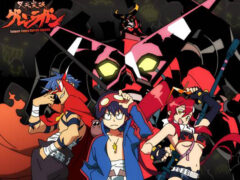
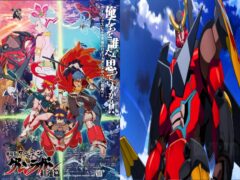
16. Hey, we can’t have an article about super robots and not suggest the show that inspired it. On a futuristic Earth, humanity has been driven underground by a set of aliens who look like giant-faced living mecha, ruled by the Spiral King Lordgenome. Humans make their way drilling from one area of the Earth to the next while living in constant fear of earthquakes, naturally. One young boy named Simon digs his way around while being shunned by fellow villagers. The only real friend he has is his boisterous brother Kamina, who is determined to see the surface world no matter what anyone says. Simon eventually encounters a strange drill bit called the Core Drill, as well as a peculiar mecha that also looks like a giant face. At nearly the same time, surface aliens attack and Simon learns that his newfound mecha, called a Gunmen, can fight off these creatures, especially when combined with Kamina’s equally strange mecha. Kamina invites Simon to be part of his Team Gurren, and they eventually come to call their combined mecha Gurren Lagann. Together with the lovely rifle-wielding warrior girl Yoko they set out on a multi-year quest to lead humanity to reclaim the Earth from the invaders.
Director Hiroyuki Imaishi (Kill La Kill, Panty Stocking and Garterbelt) brought a hyper-kinetic style and excellent designs to Gurren Lagann that take inspiration from many prior mecha shows. While promoting the 15th anniversary movie releases at Anime NYC last November in a press conference, he mentioned some of them included Armor Trooper Votoms, Zeta Gundam, SPT Layzner and various others, noting that the color theme for Lagann’s head was inspired by Astroganger. After growing up for 30 years with anime, he said mecha is the thing that makes the medium more interesting. In reference to the films, he noted that when he originally made Gurren Lagann, he wanted it to last at least 10 years and it’s lasted 15. When it was originally released he thought the expression felt a little bit dated. But after 15 years, he was hoping that it doesn’t matter if Gurren Lagann feels a little retro. – Darius
https://otakuusamagazine.com/gurren-lagann-anime-dvd-box-set/
*****
TETSUJIN-28 / GIGANTOR
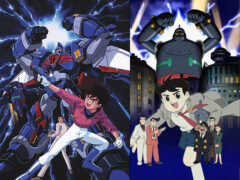
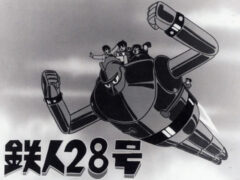
17. Mitsuteru Yokoyama, the man who gave manga magical girls, masked ninjas, and shelf-filling historical epics, put his protean imagination into overdrive and in 1956 delivered the purest distillation of every young boy’s desire, the story of a tween who can drive cars, shoot handguns, and control his very own giant robot. Young Shotaro finds his late father’s WWII robot-soldier research continued after the war and went through twenty-seven iterations before perfecting 28, just in time for it to become a powerful weapon against crime, injustice, monsters, and the occasional invasion from the Planet Magnapus. Yokoyama’s Tetsujin-28, known in the West as Gigantor, was a genre-defining moment of shonen science fiction action that grabbed Japan by its technology-obsessed lapels and never let go. Star of four separate anime TV series, a live-action film, and its own giant Kobe statue, Tetsujin-28 continues to influence, inspire and entertain worldwide audiences. DVDs of the 1960s TCJ Gigantor series are still available and Blu-Rays of both the 1980 TMS remake and TMS’s 1993 Tetsujin 28-FX series were released by Discotek Media. You can read about the 1980 Tetsujin-28/New Adventures Of Gigantor here:
https://letsanime.blogspot.com/2015/01/a-look-at-gigantors-new-adventures.html – Dave
*****
UFO ROBO GRENDIZER
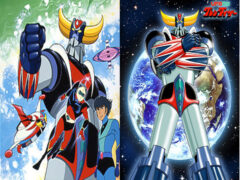
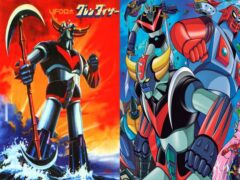
18. When the peaceful planet Fleed was conquered by the invading Vegans, the last survivor Duke Fleed fled in his planet’s secret weapon, the flying saucer/battle robot Grendizer. Arriving on Earth, Duke thought he’d found peace at last, but the pursuing Vegans appeared with fleets of flying saucers, armies of saucer beasts, and a secret moon base perfect for launching their attacks on Earth. Duke, or Daisuke as he’s come to be known in his Earthly secret identity as a mild-mannered ranch hand, must avoid the pesky questioning of vacationing aviation enthusiast/Mazinger Z pilot Koji Kabuto and the attentions of local rancher’s daughter Hikaru as he defends the Earth with UFO Robo Grendizer. Building from the Toei Manga Matsuri short “The Great Outer Space Flying Saucer War”, Go Nagai and his Dynamic Pro team retooled and expanded that film’s concept of a combo flying saucer/giant robot into a true outer space epic whose weird UFO aliens, cosmic monsters and star-spanning storyline pulls the super-robot concept up and away from its Earthbound origins. By the end of Toei’s 74 episodes of Grendizer, Koji, Hikaru and mid-season addition Maria Fleed – Duke’s little sister – are all sporting colorful super-robot pilot gear and piloting a flotilla of combination space machines against the Vegans, who bring an entire new design sense to Earth-threatening civilizations with legions of snake-headed flying saucer monsters and alien commanders whose faces split open to reveal a hollow skull inhabited by their angry spouses. Grendizer found itself part of Jim Terry’s “Force Five” package and would air in a number of American markets and nationwide as compilation films on the Showtime cable network, but for decades has been unavailable. It also became incredibly popular in France where it was renamed Goldorak. A reboot titled Grendizer U is scheduled to air later this year in Japan and Europe. – Dave (Side note, if you get to see the 23-minute movie UFO Robo Grendizer vs Great Mazinger, do so. It’s a Shogun Warriors fanboy dream come true. – Darius)
*****
VOLTES V (FIVE)
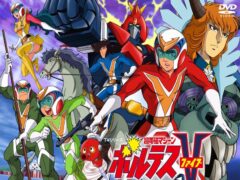
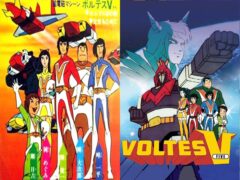
19. As Dave mentioned earlier, Super Electromagnetic Machine Voltes V is the second of the Robot Romance Trilogy directed by Tadao Nagahama. In terms of quality and popularity though, the show stands out a good bit over both its contemporaries. It starts as a fleet of alien saucers invade and take out key military targets with precision. The alien Boazanian Empire led by Prince Heinel has Earth defenses nearly defeated and sends a mechanized monster to finish the job. In response a specialized team of five formed by Dr. Kentaro Goh stands ready to take the Boazanians on. Three of them are the sons of Dr. Goh, who himself mysteriously disappeared. They are raised and trained by the other scientists in the group to fly their technically advanced planes and do their stack-and-attack bit to become the super robot Voltes V. It’s armament is rather interesting from the Heaven Sword to the to the yo-yo to the V-shaped beam that slices enemy Beast Knights apart. It even has a quick draw pistol that would make Saber Rider’s Ramrod envious. For 40 episodes, the battles play out and events take crazy twists for the humans and aliens alike. There are many themes of oppression, racism, deception as things develop to give Voltes V a pretty solid story. When the anime was imported to the Philippines, those story elements were said to have notoriously upset government leader Ferdinand Marcos because he felt they might give dangerous ideas to his citizens, especially the kids. At different times the government tried to get rid of the show. It became very popular there however and various releases, interpretations and sequels came out there over the years including different English dubs. One dub was by Frontier Enterprises and 3B Productions as a set of compilation films for North America and renamed Voltus V. In the U.S., Voltes V was pulled into the Shogun Warriors toy line collection. The series was released on blu ray eventually with considerable extras by Discotek Media. – Darius
*****
VOLTRON: LEGENDARY DEFENDER
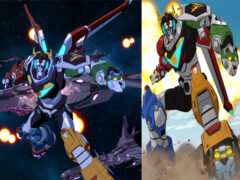
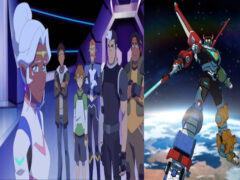
20. In the early 80s, World Events Productions licensed the rights to three different super robot shows from Toei Animation. One of them, Beast King Golion, was a fortunate mistake as WEP were instead expecting Mirai Robo Daltanious, another super robot show with a lion design. Getting Golion lead their most successful property, the Voltron franchise (which turns 40 this year), to being a staple of 80s childhoods and pop culture with its fun characters, good animation and a ton of toy demands. World Events Productions tried to recapture mecha success with Saber Rider and the Star Sheriffs (based on Star Musketeer Bismarck) but it didn’t entirely pan out. There were a few attempts by different U.S. animation companies to revive the Voltron franchise in later years, but none were very successful (or… well, very good…. really, try to sit through Voltron: The Third Dimension sometime) until the focus of this article appeared on Netflix: Voltron Legendary Defender. Dreamworks had creators Lauren Montgomery and Joaquim Don Santos put together a revamp of the poular 80s show that pays tribute to the originals to a degree (both Voltron and Golion) but goes in an entirely different direction. The original had a conflict story until the last couple minutes of an episode when they they do the stack-and-attack bit, whip out the sword and Voltron ends the fight. Lather, rinse, repeat.
Legendary Defender does not do that. Often there are times where separate lions are better that the big bot. Also, most importantly, every character is well written. This version doesn’t just focus on Keith the pseudo-leader in love with Allura while fighting Lotor’s lust as Hunk, Pidge & Lance… are just kind of there. This version changes the characters and adds to their personalities but doesn’t take away from who they were in the original. Lotor though is written in a way that’s very unexpected. His perception of reality and royalty is an interesting juxtaposition with Allura’s. We also have a new character in team leader Shiro whose fate is constantly teased to those who’ve watched Golion before while Keith’s story goes in a direction no one could have predicted. The lore developed over 8 seasons is greatly expanded, much more so than the originals. As to the animation and mech designs, they are pretty good. There is a fight between Voltron and King Zarkon that is truly kick-arse. There are times though I think the show holds back on the action where more could’ve been used. But overall, this is one anime-inspired super robot series that I enjoyed much more than I expected to even with it’s somewhat controversial ending. As of this time Voltron Legendary Defender is only available streaming on Netflix and has seasons 1-6 released on DVD.
So we’ve come to the end of our recommendations. Which ones do you agree with? What titles should we have included? We only got to 20 out of a ton of shows here so we likely missed some good ones. In fact, we know we did. However, we had to leave our keyboards and eventually deal with real life. Drop us a line and we’ll see you next time.


